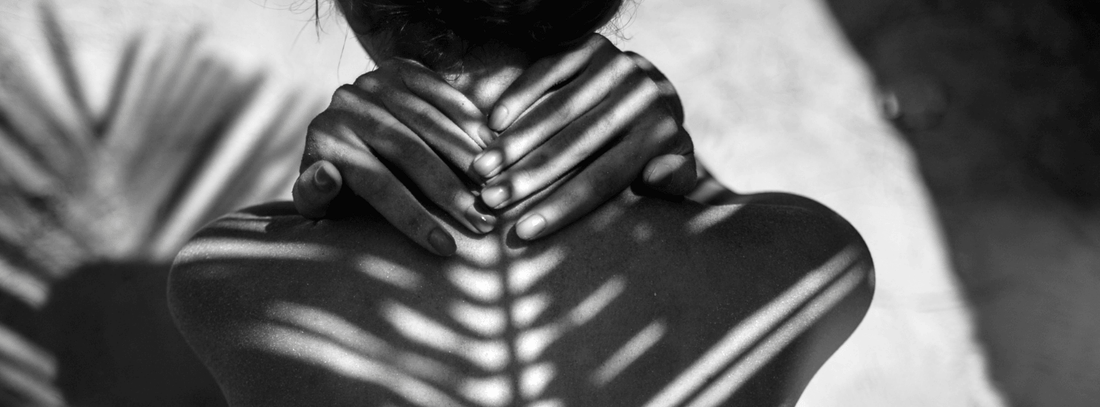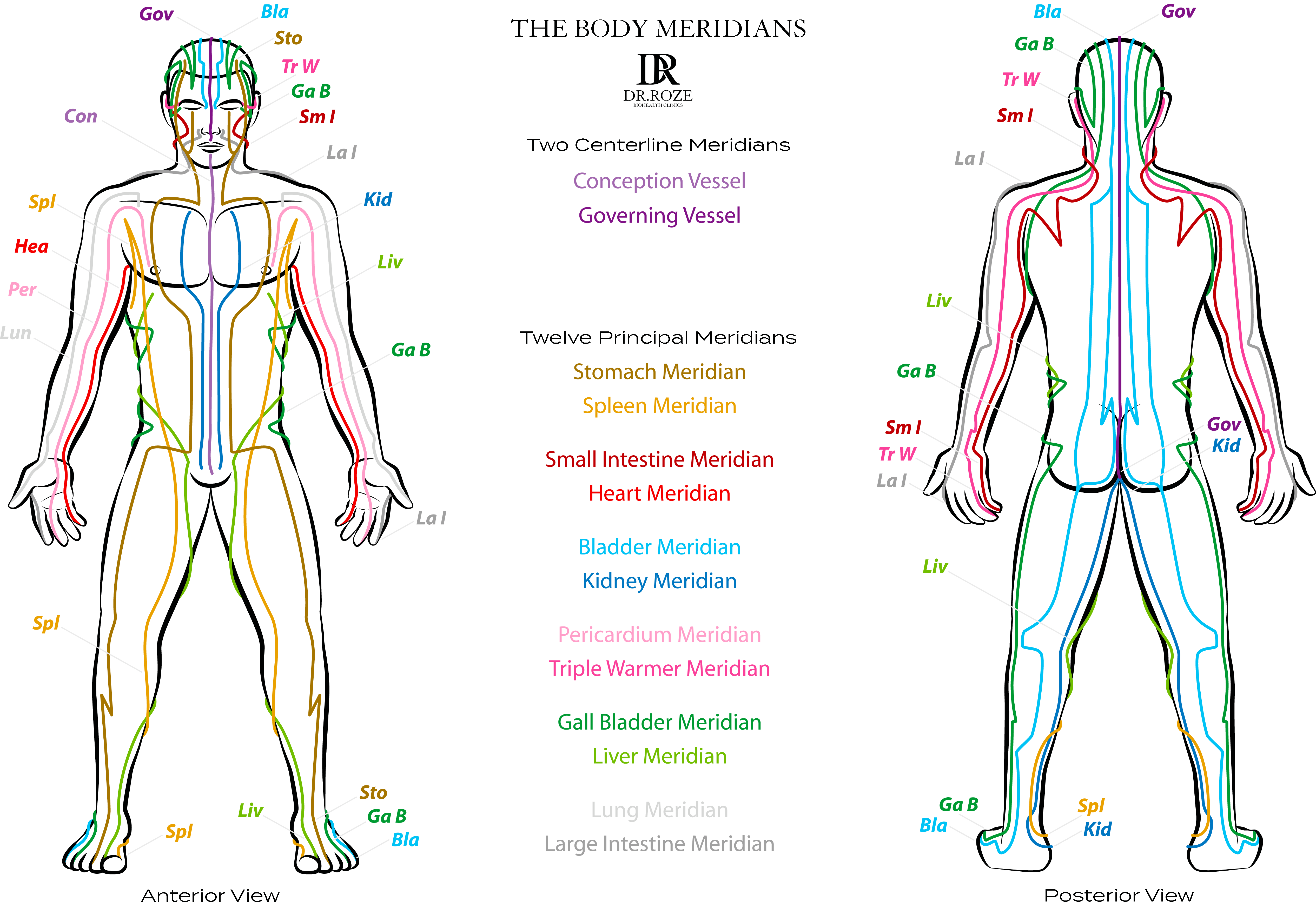Have you ever noticed that some yoga poses effortlessly energize you, while others calm or rebalance you?
This is no coincidence.
In addition to muscles and joints, yoga postures also affect something less visible: the energy channels in your body, also called meridians.
What are meridians and energy flows?
To understand Meridians well, it is wise to first become acquainted with Qi.
According to traditional Chinese medicine, meridians are energy pathways in the body. These are where " Qi " flows, which can be thought of as life energy . This energy flows along twelve main meridians and several additional pathways, each connected to specific organs. You can think of meridians as the energy highways of your body!

When energy flows are balanced, your body functions optimally. Stagnation can lead to fatigue, restlessness, or even (according to some traditions) physical complaints.
The physical and psychological aspects of meridians
Meridians are more than just energy pathways that support your organs. They form the bridge between your body and your mind.
Each meridian has a physical and a psychological side: the kidney meridian is not only about energy management, but also plays an important role in the development of willpower, courage and self-confidence.
Learn more about the 12 different meridians and their functions in " The 12 Meridians ".
Each of these 12 meridians has its own specific time of day—a two-hour period—when it is most active. This is also called the circulation of Qi, or the organ clock. During these "time slots," both the physical and psychological aspects of the meridian are most active.
Learn more about the organ clock and its practical applications in " The Organ Clock "
This demonstrates how closely the body and mind are intertwined. When a meridian becomes imbalanced, you can experience physical tension, but also emotional unrest. By focusing on meridians through yoga, breathing, or meditation, you're always working on both sides simultaneously: physical recovery and mental balance.
Image via: Roze Bio Health , The Chinese Meridian Theory.
Meridians and yoga
Various yoga traditions work on opening and balancing the meridians, or energy channels. Most yoga poses (asanas) are designed to release blockages and allow "qi" (life energy) to flow freely.
Now in Jip and Janneke...
As we've read before, meridians are highways for Qi. Just like physical highways, there's no or reduced flow when there are blockages. The same thing happens in our bodies. If there are blockages in our meridians, our life energy can't flow properly, and we can experience negative physical and psychological effects as a result.
Yoga is designed to improve the health of your meridians and remove these blockages. Therefore, the stretching nature of yoga also directly influences the health of your organs and a balanced biorhythm.
Origin and symbolism of meridians
The meridian theory originates in Traditional Chinese Medicine and is thousands of years old. In that period, physicians used acupuncture, massage, and herbs to remove blockages. Meridians have a firm place in Japanese and Taoist traditions. The meridian theory itself has influenced yoga traditions in India, where they are called nadis.
The symbolism behind the meridians revolves around harmony between body, mind, and environment. Each meridian was seen as more than a physical connection; it was a pathway of energy, emotion, and consciousness.
Science doesn't directly prove the existence of meridians, but it does confirm that body and mind are continuously connected, and that conscious attention to breath and movement can calm the nervous system.
Acupuncture, cupping and guasha in relation to meridians
Meridians form the basis of many therapies within traditional Chinese medicine. Besides yoga, three well-known methods that work directly with these energy pathways are acupuncture, cupping, and gua sha .
Acupuncture...
Uses thin needles placed at specific points along the meridians. These points function as switches: stimulating them can restore balance to the flow of Qi (life energy). This helps not only with physical complaints like pain or digestive problems, but also with emotional unrest such as stress or anxiety.

Cupping...

Focuses on improving circulation in the meridians by placing vacuum cups on the skin. The suction stimulates both blood circulation and energy flow. This can release blockages, relieving tension and fatigue.
Guasha...
This technique involves scraping the skin with a smooth instrument (usually made of jade or horn). This activates the energy flow in the meridians and helps remove toxins. Many people experience increased relaxation and vitality after a gua sha treatment.

What these three methods have in common is that they all work to remove blockages in the meridians . This supports the natural balance of body and mind, and strengthens the connection between physical health and emotional well-being.
Practical tips: ensuring a good energy flow
A balanced energy flow doesn't happen by itself. We'd like to share a few simple ways to consciously manage your energy flow:
- Stretch and move regularly – especially with gentle forms of yoga, such as yin yoga or gentle flow
- Deep, conscious breathing: try to make the exhalation a little longer each time
- Self-massage along the meridians: for example, gently massage the inside of your legs or arms
- Daily attention to your rest, for example through a short meditation on your own meditation cushion
- Try to apply the concept of the organ clock to everyday life.
- If you want to continue, you can always try one of the therapies mentioned above. However, always do this in consultation with your doctor.
Inspiring facts and symbolism
According to ancient traditions, more energy flows through your body when you laugh and relax. Symbolically, meridians represent connection: between your head and your heart, between you and the world around you. Even in nature, everything is connected—from the water in a river to the sap in a tree. At Yogi Essentials, we find this a beautiful image to remember during our yoga and meditation practice.
Frequently Asked Questions
What exactly are meridians?
According to traditional Chinese medicine, meridians are invisible energy pathways in the body along which life energy flows. Modern science cannot literally demonstrate their existence, but they are an important aspect of many Eastern traditions.
Can I feel or influence meridians myself?
You can't directly feel the energy flows like blood or nerve impulses, but with mindful yoga, breathwork, and massage, for example, you can experience a shift in your sense of energy and relaxation. This is different for everyone.
Is there scientific evidence for meridians?
Currently, there is no hard scientific evidence for the existence of meridians as described in Eastern medicine. However, there are indications that some acupuncture points align with connective tissue zones or nerve endings. The body appears to be a much more complex web than we once thought.


